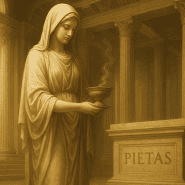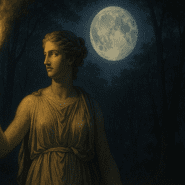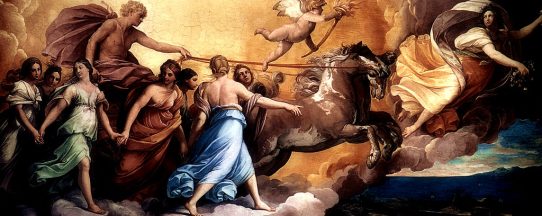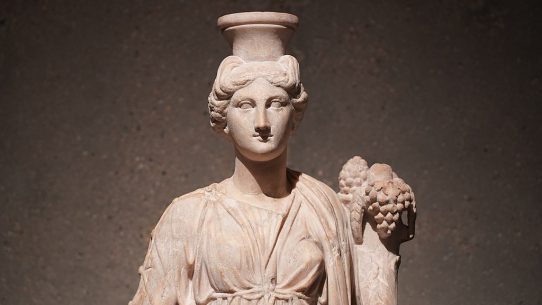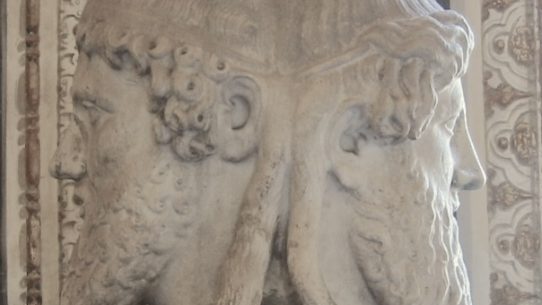Bellona, the fierce and fiery goddess of war, embodied the spirit of battle that fueled Rome’s rise to power. She was more than a symbol of bloodshed — she represented the energy, discipline, and divine fury that drove Rome’s armies to victory.
As the companion and sister (or sometimes wife) of Mars, Bellona personified the chaotic, ecstatic side of warfare — the part that inspired courage and terror in equal measure.
Origins and Mythological Background
Bellona’s origins reach deep into early Roman religion, predating even the formal worship of Mars. Her name derives from bellum, the Latin word for “war,” and she was one of the earliest deities associated with the Roman state’s military destiny. While Mars was the calculated strategist and protector of Rome’s boundaries, Bellona was the embodiment of war’s passion — the divine frenzy that preceded triumph or destruction.
The Greeks identified her with Enyo, the attendant of Ares, but Bellona possessed a uniquely Roman character. She was not merely a companion of the war god but a goddess in her own right, honored with rituals that reflected Rome’s pragmatic and ritualized approach to warfare. Her temple, rituals, and priesthood served as a vital link between the divine and the political — reminding citizens that every war carried spiritual weight.
Symbols and Attributes
Bellona was typically depicted as a fearsome woman wearing a plumed helmet and armor, often wielding a sword, spear, or whip. Her eyes were said to blaze with divine fury, and her hair flowed like fire in the heat of battle. In some depictions, she drove a chariot into war, accompanied by winged figures of Victory or Fury.
She was also associated with the torch, symbolizing both the light of conquest and the destruction of fire. Her attributes reflected not just violence but also divine zeal — the energy that transformed ordinary men into warriors for the Roman state.
In art and coinage, Bellona’s intense expression and martial attire conveyed Rome’s sacred readiness for conflict. She personified the truth that war was not merely politics by other means, but an act of destiny overseen by the gods.
The Temple of Bellona
The most famous temple of Bellona stood near the Circus Flaminius in Rome, built around 296 BCE by Appius Claudius Caecus after his victories in war. This temple served as both a religious and diplomatic center. Within its walls, the Senate met to discuss matters of war and foreign policy.
A column known as the columna bellica stood before the temple — it played a critical role in Rome’s declaration of war. When the Senate decided upon conflict, a priest of Bellona, known as the fetialis, would symbolically hurl a spear toward enemy territory (or into a small plot of land designated as foreign soil). This ritual, sanctified by the goddess, signified that the war was just and divinely approved.
Thus, Bellona’s presence legitimized Roman conquest. Her temple became a bridge between civic order and divine sanction — a space where religion, politics, and war intertwined.
Worship and Rites
Bellona’s priests, called the Bellonarii, were known for their frenzied and blood-soaked rituals. During ceremonies, they would slash their own arms and offer their blood as a sacrifice, symbolizing the unity of divine power and mortal courage. This self-wounding was believed to invoke her warlike fury, infusing soldiers with her strength and fearlessness.
Her festival, the Bellonalia, was celebrated on June 3. The rituals reflected both reverence and frenzy, expressing Rome’s belief that war required divine passion as much as discipline. These rites inspired awe — a reminder that the fury of battle was sacred, dangerous, and necessary to the Roman destiny.
Bellona and Mars
While Bellona and Mars shared dominion over war, their roles differed in character. Mars was the measured, masculine force of organized warfare — strategy, discipline, and civic defense. Bellona represented war’s emotional and destructive aspects — the chaos, bloodlust, and divine inspiration that gave warriors their power.
Together, they embodied Rome’s complete understanding of war: both its necessity and its peril. In Roman literature and art, Bellona often appeared alongside Mars, or as his herald, calling legions to arms with a voice that echoed like thunder across the battlefield.
Legacy and Influence
Bellona’s influence persisted well into the Empire and beyond. Roman generals invoked her before battle, dedicating victories in her name. In later art, she came to symbolize not only war but the spirit of resistance, bravery, and national pride.
Renaissance and Baroque artists, including Rubens and Rembrandt, depicted her as a majestic yet terrifying figure — armored, blood-streaked, and crowned with victory. Her image adorned triumphal arches and allegorical paintings as a representation of Rome’s martial glory.
In modern culture, Bellona remains an emblem of strength and righteous aggression. She represents the paradox of war — that destruction and discipline, terror and triumph, coexist in every human struggle.
To the Romans, she was not a goddess of chaos, but of divine necessity — the fury that forged empires and tested the courage of humankind.




